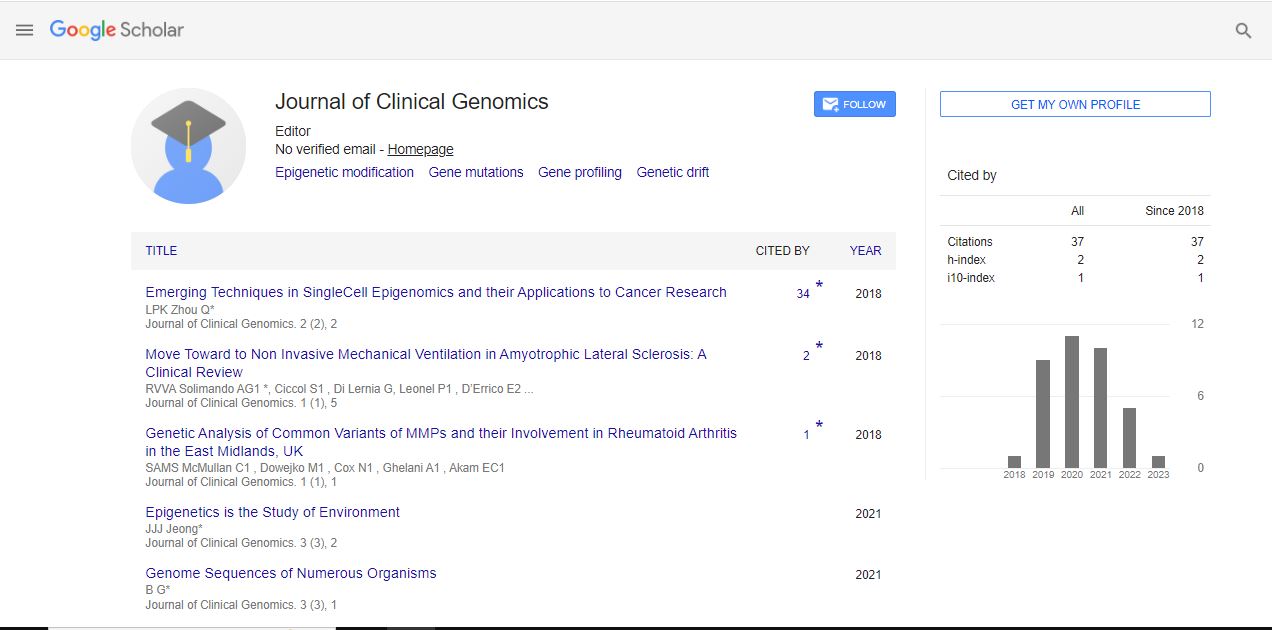Perspective, J Chromatography Res Vol: 6 Issue: 1
Recovery of Rare Earth Elements by using Extraction Chromatography
Ronald Chamberlain*
1Department of Metallurgy, Rutgers University, New York, United States of America
*Corresponding Author: Ronald Chamberlain
Department of Metallurgy, Rutgers
University, New York, United States of America
E-mail: ronald@inf.edu
Received date: 14 February, 2023, Manuscript No. JCGR-23-95886; Editor assigned date: 20 February, 2023, PreQC No. JCGR-23-95886 (PQ); Reviewed date: 10 March, 2023, QC No. JCGR-23-95886; Revised date: 28 March, 2022, Manuscript No JCGR-23-95886 (R); Published date: 07 April, 2023, DOI: 10.4172/jcgr.1000051.
Citation: Chamberlain R (2023) Recovery of Rare Earth Elements by using Extraction Chromatographyy. J Chromatography Res 6:1.
Keywords: Extraction Chromatography
Description
Extraction chromatography is a separation technique used for the recovery of Rare Earth Elements (REEs). The REEs are a group of 17 metallic elements, including scandium, yttrium, and the lanthanides, that have unique physical and chemical properties that make them essential for many modern technologies. The demand for REEs has increased in recent years due to their use in electronic devices, renewable energy systems, and other applications. Extraction chromatography offers a promising approach for the recovery of REEs from various sources, including mining waste, electronic waste, and industrial effluents. Extraction chromatography is a type of liquidliquid extraction that uses a solid support material, called the stationary phase, to selectively adsorb and retain specific components from a liquid mixture, called the mobile phase. The stationary phase typically consists of a resin, such as silica gel, modified with functional groups that can interact with the target elements. The mobile phase is a solution of the sample in a suitable solvent, such as nitric acid or hydrochloric acid. The sample is loaded onto the stationary phase, and the target elements are selectively retained on the resin while the unwanted components pass through. The target elements can then be eluted from the stationary phase using a suitable eluent, such as an acid or a complexing agent to obtain a purified fraction. It has several advantages over other separation techniques, such as solvent extraction and ion exchange. First, it has a high selectivity and specificity for the target elements, which allows for their efficient separation from other elements in the sample. Second, it is relatively easy to scale up for large-scale applications, making it suitable for industrial use and it also produces a concentrated and purified fraction of the target elements, which reduces the volume of waste generated during the separation process. It can be used to recover REEs from various sources, including low-grade ores, tailings, and waste streams, making it a versatile tool for the REE industry.
One of the main applications of extraction chromatography for REE recovery is in the mining industry. Many REE deposits contain low concentrations of the target elements, which makes their extraction and purification challenging and costly. Extraction chromatography offers a cost-effective and environmentally friendly alternative to traditional extraction methods, such as flotation and acid leaching. For example, a recent study reported the use of extraction chromatography to recover REEs from the tailings of a mining operation in China. The study demonstrated that the technique could selectively recover highpurity fractions of the target elements with high recovery rates, indicating its potential for large-scale REE production. Another promising application of extraction chromatography for REE recovery is in the recycling of electronic waste. Electronic devices, such as smartphones and computers, contain significant amounts of REEs, which are currently lost during the disposal process. Extraction chromatography offers a means to recover these valuable elements from electronic waste, reducing the need for new mining and production. Several studies have investigated the use of extraction chromatography for REE recovery from electronic waste, demonstrating its effectiveness in selectively separating and recovering the target elements from the complex matrix of electronic waste. Extraction chromatography offers a viable solution to this challenge, paving the way for a more sustainable and resourceefficient future.
 Spanish
Spanish  Chinese
Chinese  Russian
Russian  German
German  French
French  Japanese
Japanese  Portuguese
Portuguese  Hindi
Hindi 